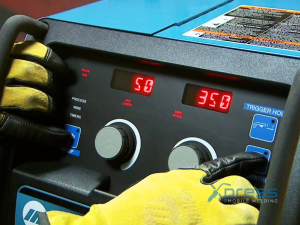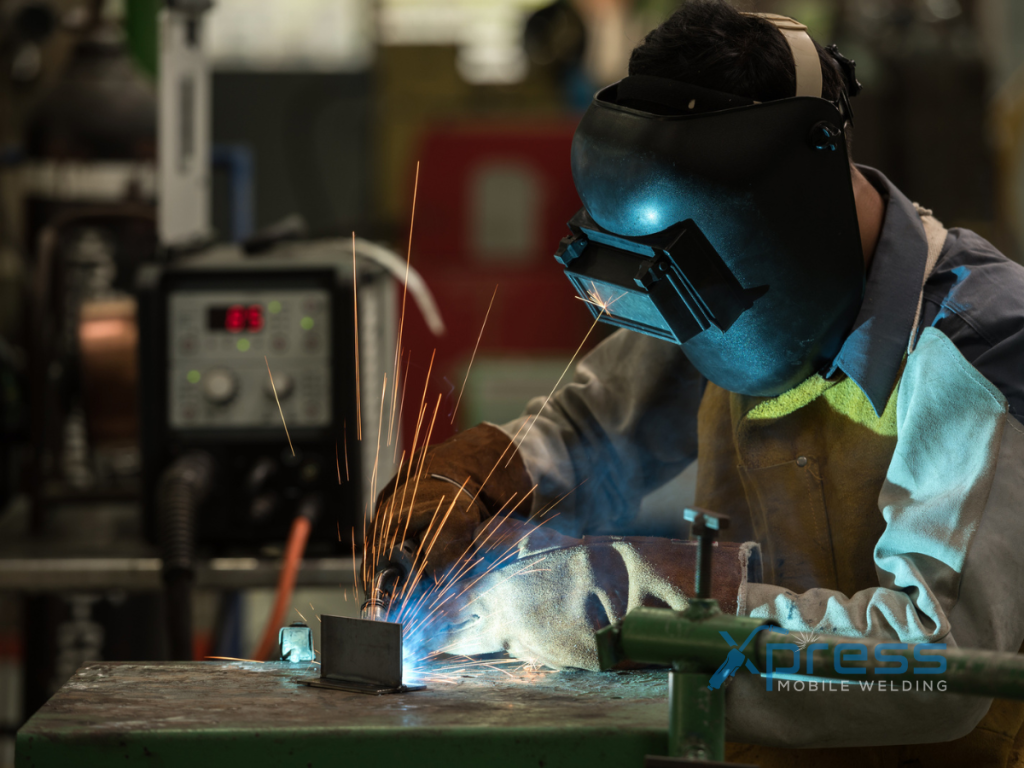Mig welding is a process that uses a wire electrode to weld together two pieces of metal. Mig welding is a popular welding process because it is relatively easy to learn and can be used to weld a wide variety of metals. In this blog post, we will show you how to set up your MIG welder for welding aluminium. We will also go over some tips for welding aluminium. Let’s get started!
Get to know your MIG welder – understand the different settings and how they work
MIG welders are a great way to join metal pieces together quickly and easily. But, like any tool, they take a bit of time to learn how to use. In this article, we’ll go over the different settings on a MIG welder and how they work. That way, you can get the most out of your machine and make strong, sturdy welds. One of the key settings on a MIG welder is the wire feed speed, which controls how fast the electrode is fed into the weld puddle. Another important setting is the voltage, which determines how much power is used to create the arc. Understanding how to adjust these settings based on the type and thickness of metal being welded is essential for achieving quality welds. Additionally, once you have mastered the basics of MIG welding, you may also want to explore other welding processes, such as the saw welding process, to expand your skills and capabilities.
The first thing you need to understand is the wire speed setting. This controls how fast the welding wire is fed through the machine. The faster the wire speed, the more heat is generated. That means you’ll be able to weld thicker pieces of metal, but it also means there’s a greater risk of burning through the metal. So, start with a lower wire speed and increase it until you find the sweet spot.
The next setting is the voltage. This controls the amount of electricity that flows through the welding arc. A higher voltage will result in a longer arc, which is great for welding thick pieces of metal. However, it also means there’s a greater risk of burning through the metal. So, again, start with a lower setting and increase it until you find the right balance.
Last but not least is the amperage. This controls the amount of current that flows through the welding arc. A higher amperage will result in a hotter welding arc, which is great for welding thick pieces of metal. However, like with voltage, it also means there’s a greater risk of burning through the metal. So, take your time and experiment with different settings until you find what works best for you. MIG welders are a versatile tool, so don’t be afraid to experiment!
Set up your MIG welder for aluminium welding – adjust the voltage and wire feed speed for optimal results
 MIG welding is a great way to join aluminium without having to worry about heat build-up and warping. However, it’s important to make sure that your MIG welder is properly set up before you start welding. The first thing you need to do is adjust the voltage. For aluminium welding, you’ll need to use a lower voltage than you would for other metals. This will help to prevent the aluminium from overheating and melting. Next, you’ll need to adjust the wire feed speed. Again, you’ll want to use a lower setting for aluminium welding. This will help to create a smooth, even weld bead. By taking the time to properly set up your MIG welder, you’ll be able to achieve optimal results when welding aluminium.
MIG welding is a great way to join aluminium without having to worry about heat build-up and warping. However, it’s important to make sure that your MIG welder is properly set up before you start welding. The first thing you need to do is adjust the voltage. For aluminium welding, you’ll need to use a lower voltage than you would for other metals. This will help to prevent the aluminium from overheating and melting. Next, you’ll need to adjust the wire feed speed. Again, you’ll want to use a lower setting for aluminium welding. This will help to create a smooth, even weld bead. By taking the time to properly set up your MIG welder, you’ll be able to achieve optimal results when welding aluminium.
Disadvantaged by its low melting point, it has a tendency to melt and pool before the welder has had a chance to build up enough heat. As a result, it’s important to adjust the voltage and wire feed speed for optimal results. When MIG welding aluminium, the recommended voltage is between 18 and 22 volts. The wire feed speed should be set at around 400 inches per minute. By taking the time to properly set up your MIG welder, you’ll be able to achieve optimal results when welding aluminium.
Aluminium is a reactive metal, which means it can easily oxidize. When oxygen comes into contact with aluminium, it forms a thin layer of aluminium oxide. This oxide layer can prevent the welding process from taking place, so it’s important to remove it before you start welding. The best way to do this is with a wire brush. Simply brush the surface of the metal to remove any oxide buildup. Once you’ve removed the oxide layer, you’ll be able to weld the aluminium without any problems.
Welding Aluminium tips and tricks – use a smaller weld pool, keep the weld puddle moving, and use a shielding gas
Welding aluminum can be tricky, but with a little practice, you’ll be able to achieve great results. Just remember to take your time, experiment with different settings, and keep the welding area clean. With these tips in mind, you’ll be able to weld aluminium like a pro in no time! First, it’s important to use a smaller weld pool. This will help to prevent the aluminium from cooling too quickly and becoming brittle. Second, keep the weld puddle moving. This will help to prevent the formation of oxide pores, which can weaken the weld. Finally, use a shielding gas. This will help to protect the weld from contamination and will also make it easier to achieve a clean, professional-looking finish.
Troubleshoot common problems with MIG welding aluminium – electrode sticking, spatter, and poor welds
Welding aluminium can be difficult, and even experienced welders can have trouble with it from time to time. Common problems include electrode sticking, spatter, and poor welds. Luckily, there are a few things you can do to troubleshoot these problems and get back on track.
- Electrode is sticking, make sure you’re using the correct gas mix. Welding aluminium requires an argon/CO2 mix, and using the wrong gas can cause the electrode to stick. If you’re still having trouble, increase the wire speed and reduce the voltage.
- Spatter can be caused by several factors, including a dirty electrode or incorrect gas mix. To reduce spatter, make sure your electrode is clean and check your gas mix. You may also need to increase the wire speed or reduce the voltage.
- Poor welds can be caused by a number of things, including dirty materials, incorrect gas mix, or improper technique. To fix poor welds, start by cleaning all of your materials and checking your gas mix. Make sure you’re using the correct technique for welding aluminium – if you’re not sure, ask a professional or look up a tutorial online. With a little practice, you should be able to avoid common problems and produce beautiful welds.
Finish your welds properly – using a grinder to clean up the edges and adding a finishing touch
Welding is an essential part of working with metals, but it’s important to know how to finish your welds properly. Welding aluminium is a bit different than welding other metals because it’s more susceptible to oxidation. This means that you need to take extra care to clean up your welds and protect them from the elements. One way to do this is to use a grinder to clean up the edges of your welds.
This will help to prevent oxidation and make your welds look more professional. Another way to finish your welds is to add a finishing touch. This can be anything from adding a bead of solder to filing down the edges. Whatever you choose, make sure that you take the time to finish your welds properly. By taking the time to do this, you’ll ensure that your welds are strong and will last for years to come.
Conclusion
So, there you have it! Setting up your MIG welder for aluminium welding is not as hard as it seems. With a few simple adjustments and the right tools, you can be on your way to joining these lightweight metals together like a pro. Have you tried welding with aluminium before? What tips would you add to our list? Let us know in the comments below.
References:
Aluminium Welding (MIG And TIG)
MIG Welding Aluminum For Beginners: Complete Guide
MIG Welding Aluminum – Electrodes, Gasses, Welder Setting Up

